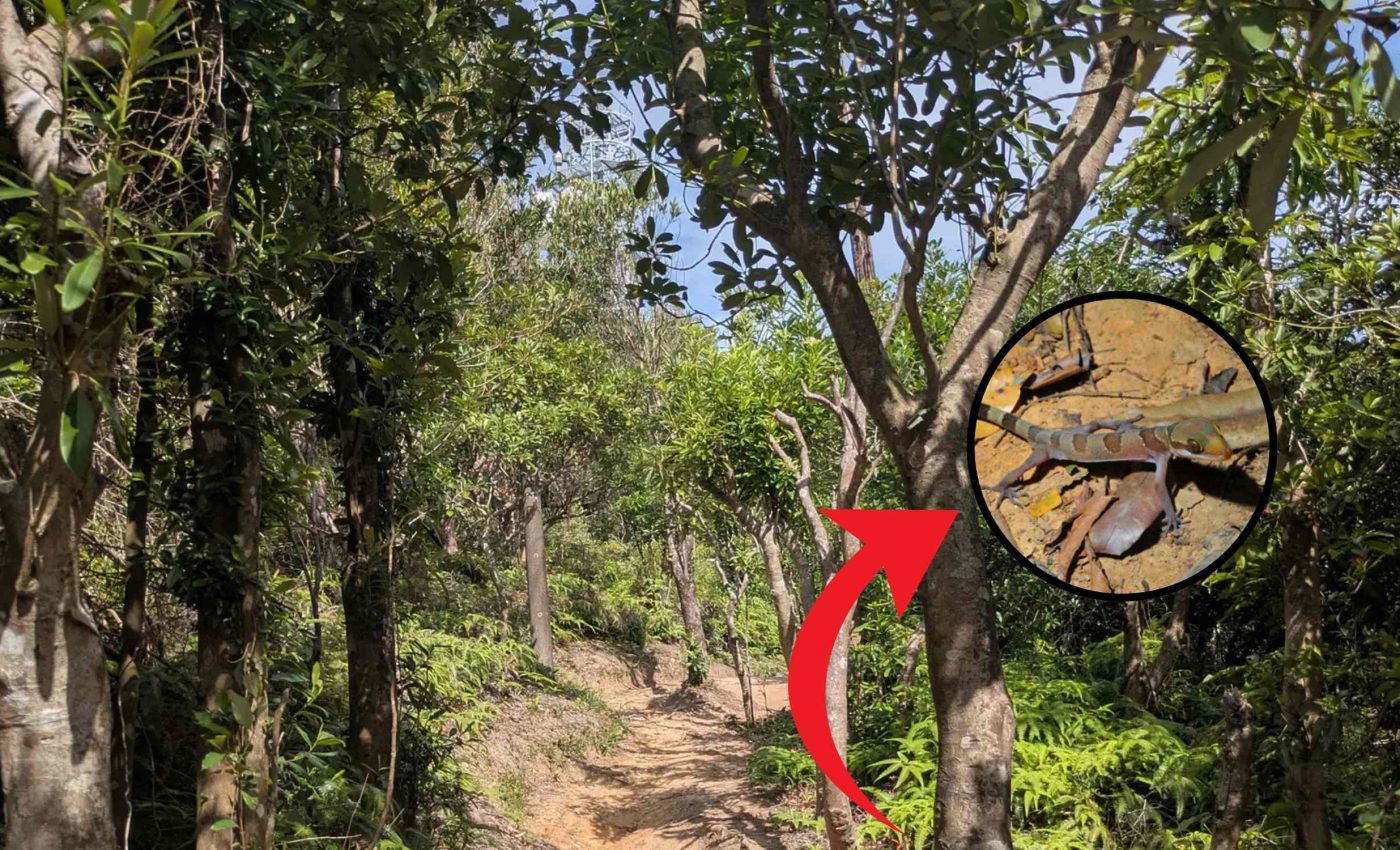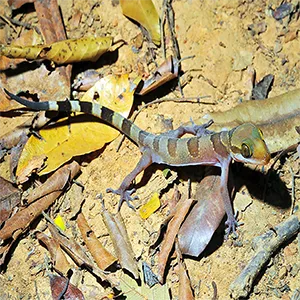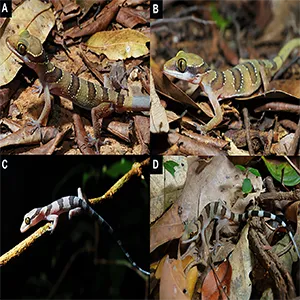
New species of gecko with curved fingers discovered in a dense forest
A field team working after dark in northeastern Thailand spotted a slender lizard with curved fingers and bold bands. Careful checks and DNA tests showed it was not just a lookalike, it was a new species that was ultimately named Cyrtodactylus sakaeratensis.
The new creature was also given a simple nickname – the Sakaerat bent toed gecko. This discovery expands a fast growing group of Asian geckos known for their arched digits and life in forests and rocky places.
Cyrtodactylus sakaeratensis
Lead author Natee Ampai of the Department of Biology, Faculty of Science, Srinakharinwirot University in Bangkok led the description in a peer reviewed study.
The team reported adults with a snout to vent length of roughly 2.5 to 3.3 inches, light brown bodies with dark brown bands edged in yellow, and well developed claws.
The head is moderately wide with a long snout and large brown eyes rimmed by yellow scales. The body is slim, the limbs are sturdier, and the digits carry strong claws rather than broad sticky pads.
Where Cyrtodactylus sakaeratensis lives
Sakaerat Biosphere Reserve sits about 150 miles northeast of Bangkok and protects dry evergreen forest and surrounding habitats. It is part of a global network recognized by UNESCO.
The reserve contains a mix of dry evergreen, mixed deciduous, and dry dipterocarp forests. At present, the gecko has only been found within this site, with records showing it restricted to Sakaerat’s dry evergreen forest.
The reserve’s status gives scientists a stable place to study species that stay hidden by day and move at night.
That fits this gecko’s observed pattern of resting in hollows by day and climbing trunks and branches after sunset.

How scientists knew it was new
The team used integrative taxonomy, a process that combines body measurements, scale counts, and genetic data to decide if a population represents a distinct species.
They sequenced the mitochondrial ND2 gene, a standard marker in reptile systematics that helps compare related lineages.
Genetic comparisons showed uncorrected pairwise divergence from related species ranging from 6.02 to 29.10 percent, a level consistent with separate species in this group.
The authors also documented a precise mix of traits that, together, set it apart from close relatives.
Those traits include the number of scales along the lips, tubercle rows on the back, and the counts of tiny plates under the fourth toe.
Taken together with the genetic signal, that pattern was strong enough to warrant a formal name and diagnosis.
Geckos with curved toes
Curved digits help many forest geckos grip narrow twigs, coarse bark, and small crevices. Cyrtodactylus sakaeratensis species relies on firm claws to catch onto rough surfaces during short climbs and quick retreats.
Gecko toe pads are lined with lamellae, thin plates that bear microscopic hairs called setae that increase friction on smooth surfaces.
In species with reduced pads and stronger claws, curved digits give mechanical grip where pads offer less help.
Different habitats reward different foot designs, and this genus showcases that variety. Forest dwellers often have proportions and textures that suit bark and leaves, while limestone species may show other tweaks.
Cyrtodactylus sakaeratensis matters
Thailand’s bent toed geckos have a history of surprises. A 2021 study reported an unprecedented amount of cryptic diversity in northern and western Thailand, showing how many distinct lineages hide behind similar looks.
Discoveries like this one support careful surveys in protected areas and nearby fragments. They also show why DNA tests paired with classic measurements make taxonomic calls clearer and more consistent.
The genus Cyrtodactylus is large and still growing across Southeast Asia. Many species live in small ranges, so mapping them is a first step toward any future protection they may need.

What the name tells us
The species name, sakaeratensis, links the lizard to its type locality, the Sakaerat Biosphere Reserve. Names like this help researchers track where a species was first found and often hint at its core range.
Taxonomic names are more than labels, they are entries in a shared catalog used by field biologists, park managers, and policymakers.
Once a name is published, it anchors future work on behavior, population size, and conservation risk.
The paper places this species as the sister to a Cambodian relative, C. kulenensis, based on the ND2 gene tree.
That relationship suggests a history of separation across distance or habitat that left signatures in the genome.
How the team worked in the field
Researchers visited the reserve several times across years to look for reptiles at night and by day. They noted microhabitats, collected standard measurements, and sampled tissue for genetic work.
Standardized methods matter because many Cyrtodactylus species look similar at a glance. Consistent counts and sequences let different teams compare notes and reduce confusion across studies and borders.
How this fits the bigger picture
Cyrtodactylus is one of the most speciose and ecologically diverse gecko genera, spanning forests, caves, granite outcrops, and islands, as shown by a 2020 analysis.
That ecological spread helps explain the steady pace of new descriptions across the region.
Cyrtodactylus sakaeratensis‘s mix of habitats and long running research station make it a sensible place to find species with narrow ranges.
Each addition to the list makes the case for keeping survey work going in adjacent zones that have had less attention.
Formal naming does not set conservation status. That requires data on population size, trends, and threats, work that typically follows the first description.
For now, the key facts are simple. The Sakaerat bent toed gecko is distinct by DNA and by a specific blend of body features, it lives in a UNESCO listed reserve, and it may have close cousins waiting in nearby forests.
The study is published in Zootaxa.
—–
Like what you read? Subscribe to our newsletter for engaging articles, exclusive content, and the latest updates.
Check us out on EarthSnap, a free app brought to you by Eric Ralls and Earth.com.
—–













